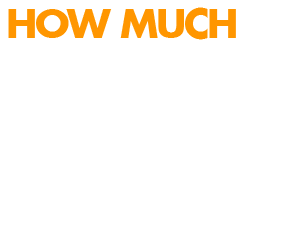« Next Article: Call me Óscar - With an Accent on the O
Previous Article: Trouble in Badminton Paradise »
Thursday, March 12, 2015 (read 3489 times)
Chess in Spanish schools
by DavidIf nothing goes awry, Spanish grade school children may be taking Chess class along with math, language and art. The Spanish parliament's education committee has unanimously agreed to push for the incorporation of chess into the Spanish primary school curriculum. If Spain goes ahead with this plan, it will be one of around 30 countries around the world that include chess in their children's school curriculum. This is an important step for Spain since studies have shown that by introducing chess to school aged children help them improve their math and reading skills; two areas that Spanish children have been underperforming in according to the results of standardized European tests.
Chess is a sport that is more than 1500 years old and originated in present day India (although there are some that contend it originated in China) and made its way across Asia to present day Iran where an early version was played called shatranj. From there traders made their way across the continent, most notably into the Iberian Peninsula during the Arab occupation around 900 CE. Within a "short" 100 years, ajedrez, the Spanish transliteration of shantranj, made its way across the better part of Europe. In some other countries of Europe the word chess originated from the Persian word for king or shāh. This difference in origin is due to the different trade routes employed by Arab merchants with some entering from the south while others came from the east.
The game has been largely unchanged since the late 15th century where rules and modifications took place in Spain and Italy. In fact, in 1497 a chess expert of his day, Luiz Ramirez de Lucena, wrote the earliest treatise of chess in Salamanca called the Repetición de Amores y Arte de Ajedrez ("Repetition of Love and the Art of Playing Chess"). This book presented and anticipated strategies and movements for what today serve as the foundation of play. Later, other Spaniards like Bishop Ruy López de Segura delved deeper into the game and analyzed and proposed openings and endgames in his 1561 book Libro del Ajedrez ("Book of chess") further enriching game play. What made this modern form of chess different form the original Arab version was the inclusion of the queen, the most powerful piece in chess in tribute to Queen Isabella.
Today, chess continues to be one of the most popular games in the world with millions playing it every day and in Spain it is a popular board game for people of all ages. Spain is also a the country where the most international tournaments are held. So it should not be surprising that this game would make its way into the educational system alongside other subjects like math and language. But that is exactly what has occurred here and with support from all across the political spectrum—something surprising since political consensus is extremely rare in the polarized world of Spanish politics.
A Spanish congressional committee has passed a proposal for chess to be included in the standardized primary school curriculum. The reason for this push to include a board game into the school curriculum is largely due to chess' demonstrated ability to help children learn more and better. What may seem like a game of kings and queens is actually a game of "quadrants and coordinates, thinking strategically and making decisions" according to an article published by Johns Hopkins University. In 2000, a study was published that showed that students who were taught chess received higher test scores in all areas of education but students did particularly well in math, Spatial analysis and non-verbal reasoning.
Because of the way the Spanish educational system is organized, it has become a tool used by the governing party of the day to forward their political priorities (much like Spanish national television) which means the educational system lives in a state of constant change where the curriculum is constantly evolving at the whim of politicians. Academics and students alike are helpless to intercede in this process which experiences fundamental shifts in priorities after presidential elections and a new party comes to power. That is why this case is so unique…and positive. In an election year, the political parties are often more obsessed with promoting their differences than with working together. Hopefully this moment of finding common ground will mean that the door is opening to greater dialogue and less partisanship. Or not. Maybe that is asking for too much, at least Spanish children will have the opportunity to expand their learning possibilities and be in vanguard of something positive in a country that until now has been in the vanguard of everything but positive.
Keywords: ajedrez,history of chess,chess in spanish,education in spain,spanish school,schools in spain,spanish education,spanish schools
Posted In: Culture
Comments
« Next Article: Call me Óscar - With an Accent on the O
Previous Article: Trouble in Badminton Paradise »


